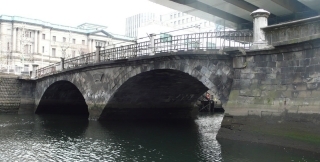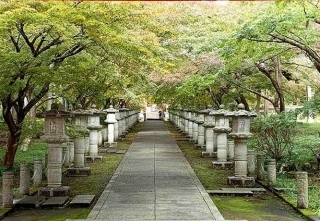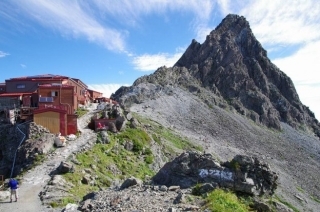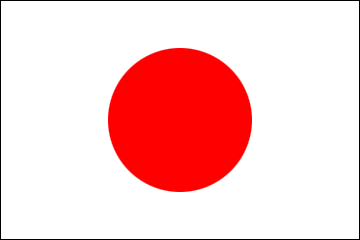Getting Lost in Kyoto and Finding More to Japan
2021/5/17
 Tokiwabashi, the subject of my thesis
Tokiwabashi, the subject of my thesis
By Benjamin Lewis (MEXT Scholarship Recipient)
As a MEXT scholar at Kyoto University, I completed my Master's program in Civil Engineering in the Spring of 2018 as a member of the Soil Mechanics Laboratory. I had a busy two years between my studies and exploring my new home, but I learned many lessons that I hope could be of use to prospective future MEXT scholars, as well as expats trying to find their way about Japan.
How and Why I Ended up in Japan
“Why did you come to Japan?” is inevitably one of the most common questions non-Japanese people will be asked in Japan. In my case, I was conversationally fluent in Japanese prior to studying in Japan, but wanted to study civil engineering in Japanese to bridge the gap between my Japanese and engineering studies and build proficiency handling technical topics in Japanese.
As a MEXT scholar at Kyoto University, I completed my Master's program in Civil Engineering in the Spring of 2018 as a member of the Soil Mechanics Laboratory. I had a busy two years between my studies and exploring my new home, but I learned many lessons that I hope could be of use to prospective future MEXT scholars, as well as expats trying to find their way about Japan.
How and Why I Ended up in Japan
“Why did you come to Japan?” is inevitably one of the most common questions non-Japanese people will be asked in Japan. In my case, I was conversationally fluent in Japanese prior to studying in Japan, but wanted to study civil engineering in Japanese to bridge the gap between my Japanese and engineering studies and build proficiency handling technical topics in Japanese.
 Kozanji, a historic temple in the mountains of Kyoto, found by accident while hiking
Kozanji, a historic temple in the mountains of Kyoto, found by accident while hiking
Life as a Scholar in Kyoto
Although it is best known as a tourist destination, Kyoto is a dynamic and multidimensional city with many other facets to show: it is also a college town, a mecca of the arts and crafts, and an agricultural producer famous for its vegetables. The sheer number of specialty shops, restaurants, shrines and temples in Kyoto is overwhelming, and even after living there for two years, I have only seen a sliver of what Kyoto has to offer. The golden pagoda at Kinkakuji, Kiyomizu-dera, and Fushimi-Inari shrine are well known tourist destinations, but there are plenty of lesser-known, equally magnificent sites to be seen. The most memorable places I visited in Kyoto were generally discovered by mistake when I got lost wandering about town.
As a graduate student in Kyoto, I spent most of my two years working on my thesis—a dynamic evaluation of the earthquake stability of a historical stone arch bridge supported by timber piles in Tokyo. The graduate school experience can vary greatly depending on who your advisor is, but in my case, I found most professors to have a very hands-off approach to advising. In Japan, some people call this a “放牧” (hoboku—free-range/pasture) style, where the advisors direct the general purpose of their students' research, and delegate most decisions regarding specific details to the student, only stepping in to correct major mistakes. While this style allows the students a large degree of freedom, it takes time to adjust to, and time is valuable when on a two-year Master's program. I tried to make the best of this style by using the freedom allotted to me to take control of my thesis and proactively involving my professor on any decisions that I lacked the experience or authority to make. While there were many difficulties for me in adjusting to this style, I learned a lot from it—not only about civil engineering, but also about the management and communication involved in project management.
Aside from the Japanese education style, my research lab in Kyoto also had a clear, vertically stratified hierarchy that took a lot of getting used to. Students were ranked by experience—Doctoral students above Master's students, and subdivisions by seniority within the two. Students with greater seniority were expected to mentor their juniors, providing advice and checking their work before presenting it to the professors. While this was a reassuring system for a first-year Master degree student, in my second year I found myself responsible for mentoring research students and first-year MA students with relevant research projects, a responsibility that I was not prepared for and that took hard work to adjust to. Regardless, I quickly realized that teaching is an effective way to learn, and made an effort to take advantage of my lab's systems as an opportunity to grow and learn.
Although it is best known as a tourist destination, Kyoto is a dynamic and multidimensional city with many other facets to show: it is also a college town, a mecca of the arts and crafts, and an agricultural producer famous for its vegetables. The sheer number of specialty shops, restaurants, shrines and temples in Kyoto is overwhelming, and even after living there for two years, I have only seen a sliver of what Kyoto has to offer. The golden pagoda at Kinkakuji, Kiyomizu-dera, and Fushimi-Inari shrine are well known tourist destinations, but there are plenty of lesser-known, equally magnificent sites to be seen. The most memorable places I visited in Kyoto were generally discovered by mistake when I got lost wandering about town.
As a graduate student in Kyoto, I spent most of my two years working on my thesis—a dynamic evaluation of the earthquake stability of a historical stone arch bridge supported by timber piles in Tokyo. The graduate school experience can vary greatly depending on who your advisor is, but in my case, I found most professors to have a very hands-off approach to advising. In Japan, some people call this a “放牧” (hoboku—free-range/pasture) style, where the advisors direct the general purpose of their students' research, and delegate most decisions regarding specific details to the student, only stepping in to correct major mistakes. While this style allows the students a large degree of freedom, it takes time to adjust to, and time is valuable when on a two-year Master's program. I tried to make the best of this style by using the freedom allotted to me to take control of my thesis and proactively involving my professor on any decisions that I lacked the experience or authority to make. While there were many difficulties for me in adjusting to this style, I learned a lot from it—not only about civil engineering, but also about the management and communication involved in project management.
Aside from the Japanese education style, my research lab in Kyoto also had a clear, vertically stratified hierarchy that took a lot of getting used to. Students were ranked by experience—Doctoral students above Master's students, and subdivisions by seniority within the two. Students with greater seniority were expected to mentor their juniors, providing advice and checking their work before presenting it to the professors. While this was a reassuring system for a first-year Master degree student, in my second year I found myself responsible for mentoring research students and first-year MA students with relevant research projects, a responsibility that I was not prepared for and that took hard work to adjust to. Regardless, I quickly realized that teaching is an effective way to learn, and made an effort to take advantage of my lab's systems as an opportunity to grow and learn.
 Mt. Yari in the Japan Alps, Nagano Prefecture
Mt. Yari in the Japan Alps, Nagano Prefecture
Sightseeing and Travels in Japan
In my free time, I tried to take advantage of my time in Japan as an opportunity to experience Japan outside of the research lab. Contrary to the popular image of the concrete jungles of Tokyo, Japan is a lush, green country with four distinct seasons. The changing of the seasons is apparent and each season has its own unique sights, sounds and smells: flurries of cherry blossoms in the spring, the deafening chorus of cicadas in the summer, autumn leaves and persimmons in fall, and the snow and mandarin oranges in winter. However, regardless of the season, I spent most of my time biking around Kyoto and the surrounding area or hiking some of the seemingly endless mountains that cover most of the country. One of my favorite hiking routes was the “Kyoto Isshu Trail”, a well-maintained 80-km network of walking paths and hiking trails through the mountains and communities on the outskirts of Kyoto City that includes many famous historical sites.
When traveling within Japan, I relied on the vast and well-maintained public transportation system. I always found trains and buses available to wherever I wanted to go, including some remote places. A couple of my most memorable trips were a 4-day hike through the Japan Alps to Mt. Yari and a 2-day hike across the remote island of Yakushima, and both trips were completed completely by public transportation.
In my free time, I tried to take advantage of my time in Japan as an opportunity to experience Japan outside of the research lab. Contrary to the popular image of the concrete jungles of Tokyo, Japan is a lush, green country with four distinct seasons. The changing of the seasons is apparent and each season has its own unique sights, sounds and smells: flurries of cherry blossoms in the spring, the deafening chorus of cicadas in the summer, autumn leaves and persimmons in fall, and the snow and mandarin oranges in winter. However, regardless of the season, I spent most of my time biking around Kyoto and the surrounding area or hiking some of the seemingly endless mountains that cover most of the country. One of my favorite hiking routes was the “Kyoto Isshu Trail”, a well-maintained 80-km network of walking paths and hiking trails through the mountains and communities on the outskirts of Kyoto City that includes many famous historical sites.
When traveling within Japan, I relied on the vast and well-maintained public transportation system. I always found trains and buses available to wherever I wanted to go, including some remote places. A couple of my most memorable trips were a 4-day hike through the Japan Alps to Mt. Yari and a 2-day hike across the remote island of Yakushima, and both trips were completed completely by public transportation.
Advice to Scholars in Japan
As someone who spoke the language and had prior experience in Japan before coming, I had an easier time adjusting to life here than most. For many scholars coming to Japan for the first time, buying groceries, getting a cellphone, and adjusting to life in a new country will be the first hurdles to encounter. Regardless, to make the best of your time in Japan, I offer the following advice once you have adjusted to your new home:
As someone who spoke the language and had prior experience in Japan before coming, I had an easier time adjusting to life here than most. For many scholars coming to Japan for the first time, buying groceries, getting a cellphone, and adjusting to life in a new country will be the first hurdles to encounter. Regardless, to make the best of your time in Japan, I offer the following advice once you have adjusted to your new home:
- Many times, in Japan, people will not communicate what they expect of you in clear terms. Surprise them by setting the bar high for yourself.
- It's easy to get hung up on specific words and phrases people use and how they could be interpreted in English; however, don't read too deeply into how people say things and instead focus on the message they are trying to communicate.
- Natto is delicious once you get past how objectively disgusting it is.
- Don't be passive, take control of your time in Japan and proactively engage your advisors in your studies.
- If you visit Kyoto, set aside a day to get lost and wander about town.
